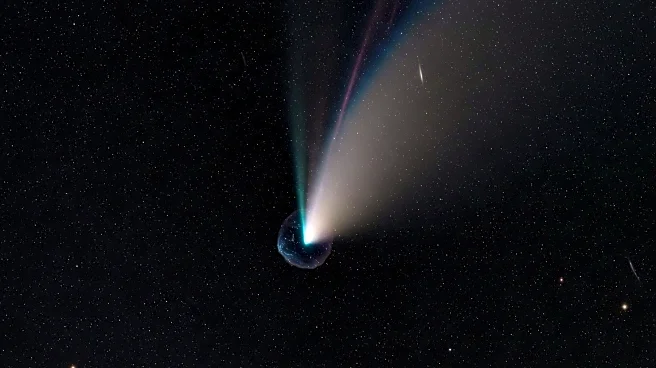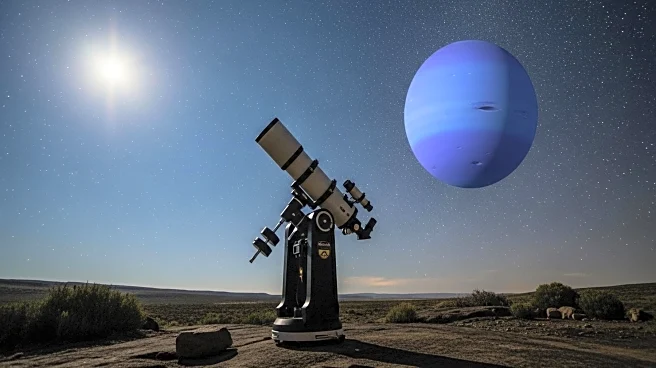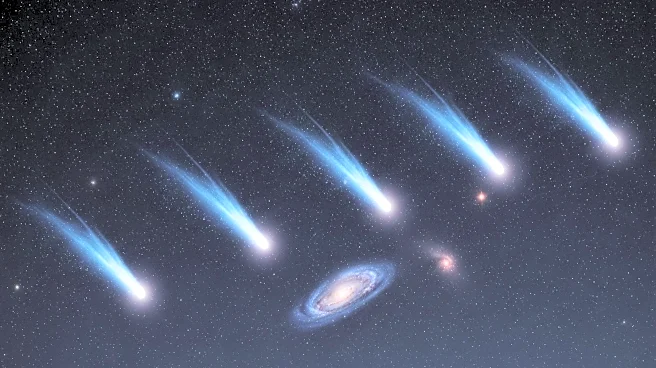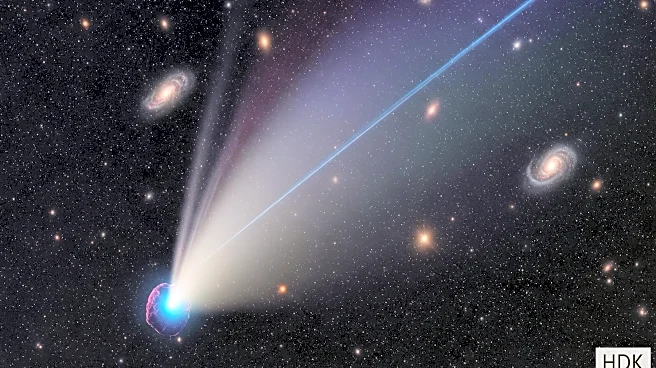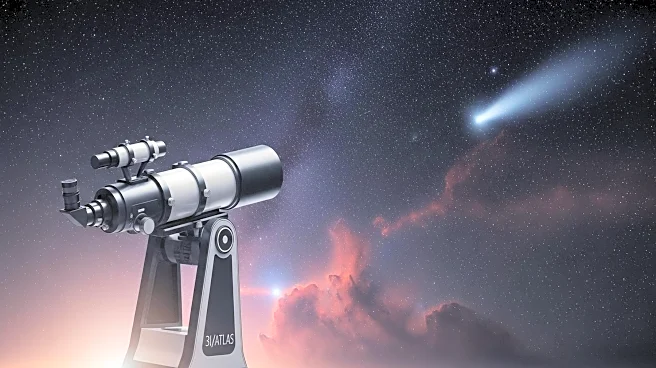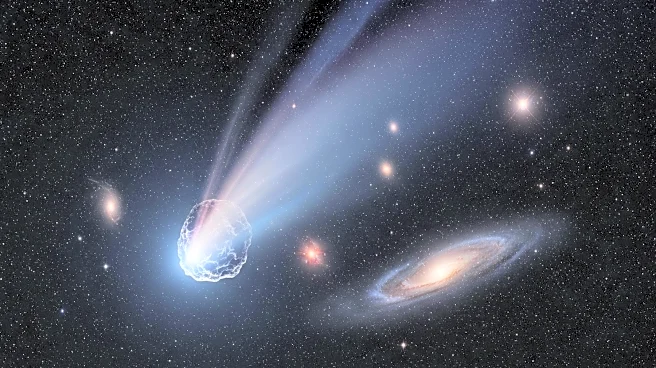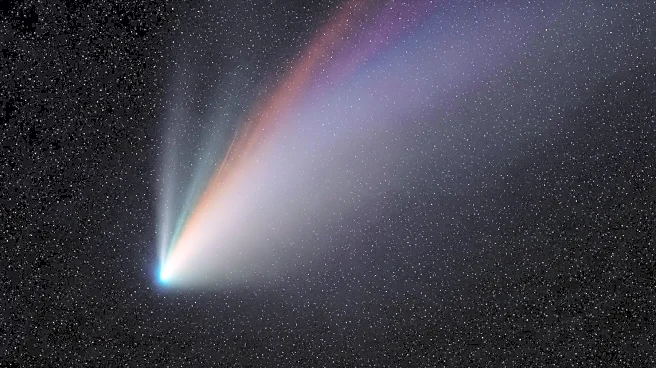What is the story about?
What's Happening?
Comet C/2025 A6 (Lemmon), discovered by the Mount Lemmon Observatory in the United States, is set to become a prominent astronomical object this fall. Initially resembling an asteroid, the comet was identified in January 2025 with a magnitude of 21. By early February, a short tail was observed, confirming its status as a comet. The comet's brightness unexpectedly increased from 16 to 9 magnitude between July and August, prompting revised forecasts. Currently located in the constellation Lynx, it is visible through small telescopes and may become visible to the naked eye in October as it approaches Earth. The comet's orbit is retrograde, inclined at an angle of 144° to the ecliptic plane, with an orbital period of 1,350 years. It will pass at a minimum distance of 0.6 AU from Earth on October 21, potentially reaching a magnitude of 4, making it visible to the naked eye.
Why It's Important?
The visibility of Comet C/2025 A6 (Lemmon) offers a unique opportunity for astronomers and enthusiasts to observe a celestial event that occurs infrequently. The comet's approach provides insights into the composition and behavior of such astronomical bodies, contributing to the understanding of cometary dynamics and their interaction with the solar system. For the scientific community, this event allows for the study of the comet's physical properties and its trajectory, which can inform future predictions and models. Additionally, the comet's visibility to the naked eye could spark public interest in astronomy, encouraging educational outreach and engagement with space science.
What's Next?
As Comet C/2025 A6 (Lemmon) continues its journey through the inner Solar System, astronomers will closely monitor its brightness and trajectory. Observations will be conducted using telescopes and binoculars, particularly in the Northern Hemisphere, where visibility is optimal. The comet will pass its perihelion on November 8, at a distance of 0.53 AU, and will gradually become visible in the Southern Hemisphere. Scientists will analyze data collected during this period to enhance understanding of cometary behavior and interactions with solar and interstellar environments.
AI Generated Content
Do you find this article useful?
